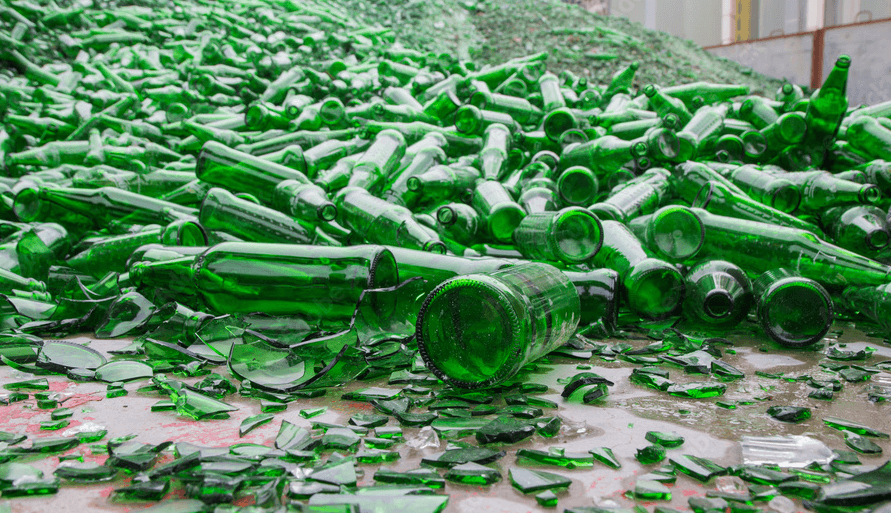According to several Internet publications, Japan exported glass shards from the Soviet Union to later make furniture from wooden containers. We checked to see if there is evidence for this story.
Materials distributed on the Internet describe an unusual trade scheme between Japan and the USSR: supposedly the Asian country purchased tons of broken glass from the Soviet Union, which was then dumped into the sea, and the real purpose of the transaction was to obtain containers - boxes made of high-quality wood, which were sent to Japanese furniture factories. Similar publications can be found, in particular, on the website about design and technology Novate.ru, portal Rambler Weekend and resource "Reporter". Published late May 2021 on YouTube video about this unusual deal in just over two months dialed almost 1 million views. Users of social networks did not deprive such publications of attention either - posts in "VKontakte" And Facebook get tens and hundreds of likes.
The search for the original source of this story led us not to an international trade treaty or serious academic research, but to the Pikabu website. In February 2014, user Allen wrote: “The other day my father told me a funny story. Japan massively purchased broken glass from the Union. For what? To make furniture (yes, furniture). In general, the scheme is this: the USSR sends tons of broken glass to Japan in high-quality wooden boxes, and the cunning Japanese throw the glass into the sea (or somewhere else), and make furniture from the boxes and send it back to the USSR. Things like that." Other users of the platform in the comments were divided into those who expressed doubt about the authenticity of the statements made, and those who began to present similar stories. In particular, commentators on Pikabu talked about Soviet machine tools that the Japanese bought and then melted down into cars, that the real target was not boxes, but nails (they were also sent for melting), or about the purchase of shovels - the metal part, as you probably guessed, was allegedly melted down, and the wooden part was sent to woodworking factories.
For about four years, judging by the results of Internet searches, the story about the sale of broken glass to Japan was of almost no interest to anyone. But in mid-August 2018, several sites wrote about it within a few days, and then the topic was picked up by social network users. Apparently, this wave was started by the ANews resource - there is a publication there appeared earlier than other sites, August 7. Note that the narrative is somewhat different from that presented by the Pikabu user. The fragment about the purchase of broken glass itself began to be called a “legend”, which “many people from the USSR remember” and “was considered a fiction for a long time”, and the explanation about the boxes was considered almost a serious discovery. Many publications that appeared over the next few days either verbatim or substantially coincided with what ANews reported. In subsequent years, this story resurfaced from time to time on some Internet resources and social networks, but in a chronological sense, not so concentrated. Let us note that the unusual trade is not talked about in any authoritative source, either in Russian or in English.
Both in the case of the original publication on Pikabu, and in the case of subsequent retellings in the media, there is practically no specificity in the story about the cunning plan of Japanese furniture manufacturers. From these texts we cannot find out when such deliveries took place, what their volumes were, through what logistics chain the fragments were delivered, on the basis of what contracts or agreements the sales were carried out, what furniture factory processed the boxes, etc. Often, such a significant lack of details suggests that we are dealing with either highly distorted or completely fictitious information.

Despite the obvious lack of clues, let's try to assess the likelihood of verifiable events. Let's start with the fact that in the second half of the 20th century, the USSR was one of the largest suppliers of wood to Japan - the country's economy developed rapidly after the Second World War, and its own resources wasn't enough. According to official Japanese statistics, since 1961, the USSR supplied the country with at least 1 million m3 wood annually. Deliveries peaked in 1973 (more than 9 million m3), then, due to the crisis, they began to gradually decline, but even by the beginning of the 1990s they exceeded 4 million m3. It is unlikely that in such a situation the Japanese would for some reason need a complex scheme for purchasing wooden boxes.
The explanation about how the resulting boards were planned to be used looks no less suspicious. As follows from verified publications, the Japanese made furniture from them, but data from the Land of the Rising Sun is refute. For the production of furniture, the Japanese preferred North American wood, while Soviet wood was used mainly in construction and processed into packaging materials. How claimed analyst Hiroaki Kakizawa, this was due to the fact that Soviet exporters did not always comply with the terms of the contract - they supplied boards or trunks of the wrong sizes and shapes that were needed, or even sent materials of insufficiently good quality to recipients.
As the authors of publications appearing on the Internet since 2018 clarify, the Japanese were allegedly particularly interested not just in the boxes, but in the material from which they were made—cedar. Let's leave aside the question of how justified it is to make containers for transporting broken glass from such valuable wood, and turn to the history of the Soviet timber industry. Since the late 1950s in the USSR, the cutting down of cedar pines was seriously limited, and by 1989 - almost prohibited. These trees are much more active were used in the procurement of pine nuts than in the manufacturing industry.
To summarize, we rate the verified messages as highly implausible. The cunning scheme to buy broken glass (actually wooden boxes) from the USSR is not reported in authoritative sources or scientific research. The written recording of this story occurred only a few years ago - it is suspicious that no one told about it either in Soviet times or for two and a half decades after the collapse of the USSR. Finally, the validity of such a deal raises serious doubts - the Soviet Union had already supplied the Japanese with a lot of wood for several decades.
Most likely not true
- Is it true that the USSR traded warships for Pepsi in the late 1980s?
- Danchenko A., Danchenko M., Myasnikov A., Bekh I. Cedars of Russia
If you find a spelling or grammatical error, please let us know by highlighting the error text and clicking Ctrl+Enter.







